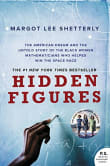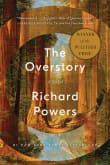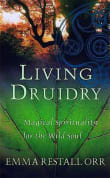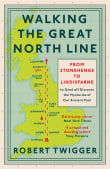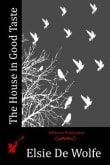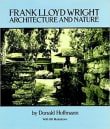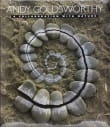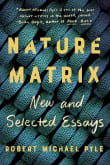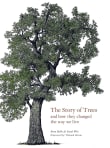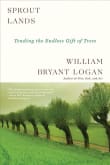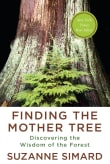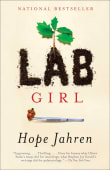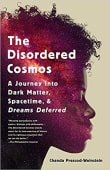The Hidden Life of Trees
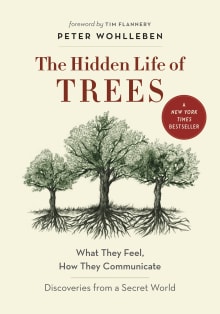
Book description
"A paradigm-smashing chronicle of joyous entanglement that will make you acknowledge your own entanglement in the ancient and ever-new web of being."--Charles Foster, author of Being a Beast Are trees social beings? In this international bestseller, forester and author Peter Wohlleben convincingly makes the case that, yes, the forest is…
Why read it?
13 authors picked The Hidden Life of Trees as one of their favorite books. Why do they recommend it?

I enjoyed this book specifically because it illustrates trees as social creatures, talking and sharing with each other and building relationships. Peter Wohlleben really opened my eyes to the hidden underground network in forests.
The way Peter tells the story of trees' lives makes it so relatable. He tells the story of trees' unique lives in such an approachable and familiar way, describing how they "feel" pain, "taste" chemicals, and "hear" sounds.
I found the way Wohlleben animates complex scientific ideas through captivating prose most appealing. Deepening my personal relationship with nature.
From Nada's list on deepen our understanding of the world around us.

As humans, we sometimes find ourselves thinking that we are at the top of the intelligence chain, that we have it all figured out and everything else in the world is lesser.
The Hidden Life of Trees made me totally rethink that, and not simply for trees, but the interconnectedness of our world and how everything works together perfectly in harmony…until humans came along and began to hack the system, of course.
This book gave me a deeper understanding and appreciation for trees and made me think about how much we could be learning from our distant relatives, rather than…
From Tina's list on helping you process emotions around climate.

I like knowing how things work and how everything is interlinked. Meeting people who are enthusiastic, and have a passion for something, is always fascinating and involving. Writing clear, engaging prose on a complicated technical subject that can easily be read by the layman takes a great deal of work. My whole life, I have loved trees and woods. This book combines all of these and sprinkles in great anecdotes of life as a forester.
Even better, there are three books by Peter Wohlleben, and they are all equally readable, charming, and informative.
If you love The Hidden Life of Trees...

I can do no better than to repeat from the cover flap: “Are trees social beings...", well Peter Wolverine convincingly makes the case that, yes, the forest is a social network.
He draws on groundbreaking scientific discoveries to describe how trees are like human families: tree parents live together with their children, communicate with them, support them as they grow, share nutrients with those who are sick or struggling, and even warn each of impending dangers.”
Almost every page brings a new surprise and I have to keep telling myself: if we go far enough back, we have a…

As a forester in Germany, Peter Wohlleben slowly came to understand the trees he managed as living beings that form a community.
They not only understand their environment and communicate, he says, they work together, nurture their seedlings, and do everything they can to control their environment. They also lead complicated lives and make important decisions such as when to drop their leaves in fall.
Too early and they lose the chance to make more food, facing potential starvation; too late and an early storm could weigh down leaves with snow and ice and break a limb, a potentially fatal…
From Sue's list on making you love plants.

Wohlleben’s book is nothing short of revolutionary and made an incredibly powerful impression on me.
It reveals the way that all trees within a forest are connected via their roots and commensal relationships with fungi. This enables groups of trees to share nutrients, help others that are struggling, and to communicate the presence of disease and pests via chemical signals.
The Wood-wide-web revealed, explored, and explained in an exciting and easy-to-read format. Will change the way you see trees and forests.
From James' list on trees and the landscape around us.
If you love Peter Wohlleben...

This is the book that started the “tree revolution.”
With compelling narration and personal narratives, Wohlleben takes readers inside the life of a forest to discover a world previously unknown.
This book will change your mind and change your perspective about the role of trees in the natural world. Like me, your eyes will be opened and your senses stimulated by the author’s passion for tall timbers. This is a book to savor, enjoy, and read several times. In short, a classic!
Imagine my joy when a pre-publication review of my book noted that it was “…a perfect read for…
From Anthony's list on trees and forests.

Forester and journalist Wohlleban weaves together an account, not unlike that of Suzanne Simard, power-packed into a gift-sized little book that reveals the remarkable interdependencies and biological communications between trees, and also beyond them and reaching to interdependent fungi and other microbes on which forest health depends. For me, new insights leaped off of every page as I breezed through this wonderful story of trees and forests in our time.
From Tim's list on important reads about forests.

Peter Wohlleben is a forester who shares his remarkable observations of trees. Trees have a language—they communicate by chemicals from root to branch, and send scent warnings to other trees. For humans, the forest is more than beautiful; forest air is actually cleaner because the trees filter it. Wohlleben acknowledges the under-appreciated role of the soil microbial communities that keep forests alive, their heat production warming the roots in winter. Amazingly, trees even need “sleep” at night as we do. Producing light at night, as in cities, is not good for trees. As a scientist, I might question Wohlleben’s points…
From Joan's list on trees, stars, and the scientists who love them.
If you love The Hidden Life of Trees...

The book that started it all. Much of the current global interest in everything trees was actually inspired by Peter Wohlleben's amazing book. After millennia of both religiously and scientifically defining trees as mere things, his was the first non-fiction book that I have read – no devoured – that finally grants trees the status of a living entity. They are much more like us than we have been led to believe. I am certain that after reading it you will never look at trees the same way again. Can’t recommend it highly enough!
From Artur's list on the amazing world of trees.
Want books like The Hidden Life of Trees?
Our community of 12,000+ authors has personally recommended 100 books like The Hidden Life of Trees.



